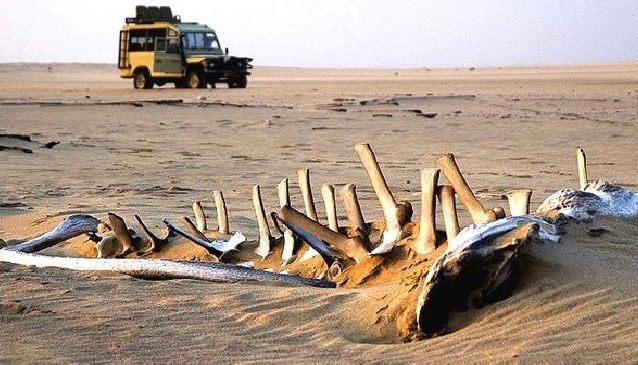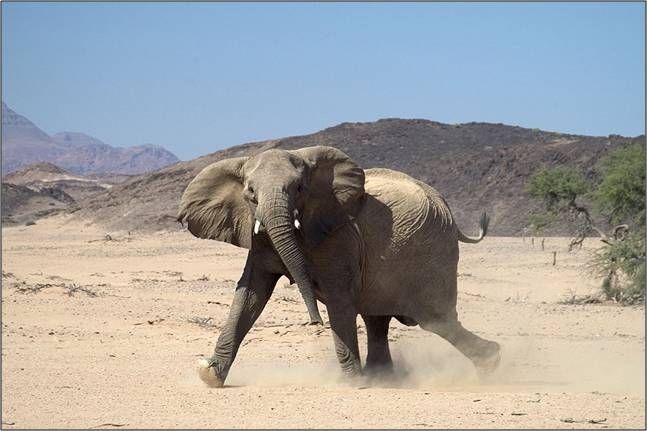Discover the wild wonders of Namibia’s Skeleton Coast

The Skeleton Coast, a major Namibia attraction, has long since evoked an image of desolation and despair, compounded by the shipwrecks and numerous tales of stranded sailors that were never seen again. In times gone by, the joy of explorers and travellers landing safely on a beach, out of reach of the pounding waves, was quickly doused by the realisation that an endless, dizzying expanse of waterless land lay just beyond the crest of the dunes. Any mystical image of an oasis in the distance held no promise of rescue. Once you found yourself on its shores you were at the mercy of the elements, and they played hardball.
Probably the most famous story in Namibia's culture is that of the Dunedin Star. The liner was grounded about 500 metres from the beach in 1942; what followed was an intense 26-day rescue effort involving numerous other ships, Ventura Bomber planes from Cape Town, and an overland convoy in one of the most incredible rescue attempts ever made. Two books were published on the subject, vividly portraying the events that led up to and followed the disaster. “Dead Reckoning: The Dunedin Star Disaster” by Jeff Dawson and “Skeleton Coast” by John Marsh both lay out a scene of extreme survival and incredible heroism in an area renowned for not allowing its victims to escape unscathed. Indeed, many of the survivors, including three airmen, were never the same after their encounter with the Skeleton Coast.
In recent years, however, “The land God made in anger”, as the local Bushmen refer to it, has become one of the most beautiful and remote destinations the world has to offer. With stunning displays of colour and unforgettable scenery, it will capture your heart and linger there for eternity. Indeed, locally the Skeleton Coast is one of the most loved attractions in Namibia.
What first strikes you about the Skeleton Coast is the sheer expanse of space in which you find yourself; you can literally see for miles around you. The interior is an intricate mix of dry riverbeds, rocky hills and salt pans. Animals – including desert elephants, ostrich, oryx, giraffe and even lions – can be seen wandering along dusty trails in search of sustenance. Rocky canyons seem to rise up from nowhere and look down upon springs and small streams that hug their feet.
The coastline is a different story. With long, lonely beaches and towering waves that crash down spraying plumes of foam, the coast evokes wonder as to the fate of those survivors of stranded ships. During good weather, the ocean is a canvas of blues and greys, and you would never imagine that it hides a rift of rocks that has sent many a ship to its doom. To the north, seal colonies bathe in the warmth of the sun and mischievous ghost crabs dance on dainty legs near the surf. To the south lies the landmark of Rocky Point, a protrusion that not only lends itself as a beacon but also acts as a vantage site for birds. Beautiful rock pools contain delicate sea creatures and lend a softer side in contrast to the roughness of the ocean.

A desert elephant
In spite of its seemingly hostile environment, the Skeleton Coast jealously guards some of the most unique and amazing adaptations of fauna and flora on earth, like a sunken ship guards its treasures. From the white lady spider and desert chameleon to the “flowering stones” and dozens of lichen species, the area displays an incredible wealth of natural diversity. It is here that one gets a true picture of how animals integrate and depend on each other in a balanced ecosystem.
A fascinating example are the desert elephants, which dig in the dry riverbeds for underground springs. This creates watering holes for other animals that would otherwise not be able to dig for water, thus playing a crucial role in the combined survival of the area’s fauna. Meanwhile, the grey coastal fog that contributes to the spooky image of the Skeleton Coast is in fact a vital part of the ecosystem: it provides enough moisture for lichens and other desert-adapted flora and fauna to flourish. Tiny droplets condense on the bodies of the small tok tokkie beetles while in their ‘head stand’ position, and run down directly into their open mouths. That which was once seen as forbidding and scary is actually a vital life force.
Because of the sensitivity of the area and its inhabitants, guests can only traverse the Skeleton Coast with a certified tour operator of which only a few are allowed access to the inner areas. To the south, a small part is open to guests with temporary permits. But to truly experience the Skeleton Coast in all its splendour you have to go to the heart of it. Make sure you make use of a reputable company who will respect the delicate nature of the environment.
The Skeleton Coast is truly a most stunning and complex ecosystem of wonder and amazement. It may hide many a shipwrecked victim long since covered with the sands of time, but it also ranks as one of the most remarkable and rewarding areas in the natural world.